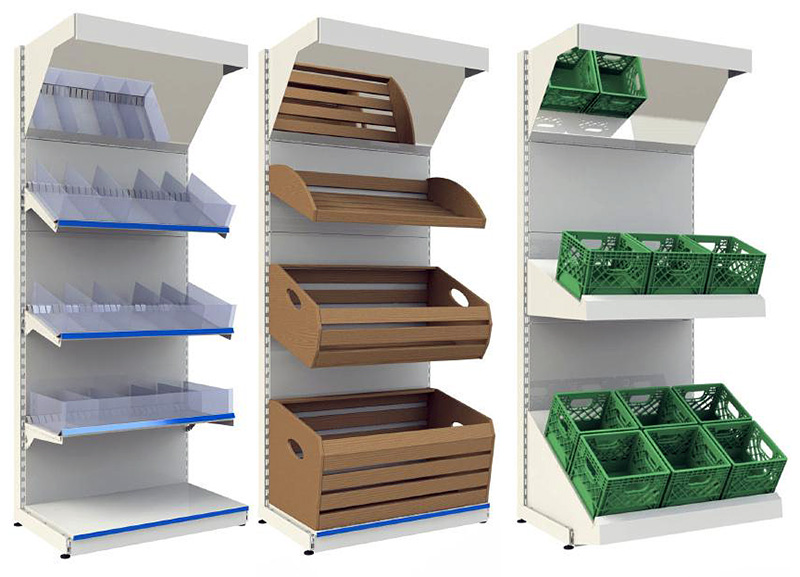
Efficient product organization and display is critical to attracting shoppers and maximizing sales in any retail environment. Choosing the right shelving can have a significant impact on the aesthetics and functionality of your store. Here is a step-by-step guide to help you choose and buy different types of shelving to organize and display your products:
1. Assess the needs of your store:
Before choosing shelving, evaluate your store layout, available space, and types of products on offer. Consider factors such as the size and weight of items, inventory levels, and the overall store design theme.
2. Define shelving types:
Different types of shelving serve different purposes. Common shelving types include:
Shelving: Suitable for displaying a wide range of products, from books to clothing. For flexibility, consider adjustable shelves.
Gondola Shelving: Freestanding units with double sided shelving, ideal for creating aisles in large stores.
Wall Shelving: Panels with horizontal slots for attaching hooks and shelves, ideal for hanging items such as clothing and accessories.
Counter Shelving: Similar to slats but with small holes for hooks, great for versatile display placement.
Wall Displays: Wire mesh panels for attaching hooks and shelves, providing a modern and flexible display solution.
Revolving Shelving: Tall, vertical shelving that rotates is ideal for holding items such as greeting cards or small accessories.
3. Consider product visibility:
Choose shelving that allows customers to see the products clearly. Open shelving, glass shelves and clear display cases are great for displaying merchandise unhindered.
4. Prioritize durability:
Invest in shelving made from durable materials such as metal, wood or high quality plastic. Sturdy shelving supports the weight of products and ensures durability.
5. Optimize space:
Choose shelving that makes efficient use of vertical space, especially if you have limited floor space. Wall shelves, vertical towers and hanging displays help maximize space.
6. Mobility factor:
If you need the flexibility to change your store layout, consider shelving with wheels. Mobile shelving allows you to adapt to changing needs and events.
7. Brand cohesion:
Make sure the shelving you choose matches your store's brand and overall aesthetic. Consistent design enhances the store's visual appeal.
8. Finding suppliers:
Search for reliable shelving suppliers both locally and online. Consider options such as hardware retailers, furniture stores, and online marketplaces.
9. Price comparison:
Compare the prices of different suppliers to make sure you get the best value for money. Keep in mind that higher quality shelving may have a higher initial cost but may be more cost effective in the long run due to durability.
10. Check reviews:
Read customer reviews to evaluate the quality and functionality of the racks you are interested in.
11. Durability Check:
If possible, visit stores that use the same shelving you are considering. See how well they last over time.
12. Plan your installation:
Consider if professional shelving installation is required or if you can install it yourself.
13. Measure and Plan:
Before purchasing shelving units, measure your store accurately to ensure they fit snugly.
14. Consider accessories:
Don't forget to consider accessories such as hooks, baskets, and sign holders to enhance the display's functionality.
15. Purchase and Organize:
After you've made your selection, purchase the shelving units and arrange them according to your store layout and product categories.
By following this guide, you will be well prepared to select and purchase shelving that will improve your store's organization, display, and overall appeal. Remember that the right shelving can go a long way towards creating a positive shopping experience for your customers and driving sales.






